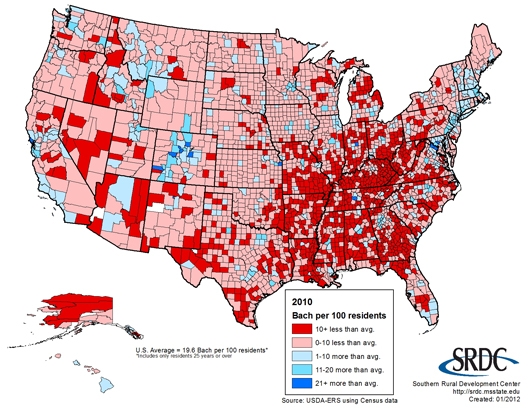
Cancer is the second leading cause of death in the US, accounting for one in four deaths in Americans, according to the Centers for Disease Control and Prevention.
Over the last few decades, cancer death rates have been falling, with the exception of a few key types of cancer: liver, pancreatic, and endometrial cancer.
To get a better look at the incidence of cancer and cancer death rates across the US, the CDC mapped out the data on a state-by-state level. Here’s what they found.
Erin Brockovich is a 2000 American biographical film directed by Steven Soderbergh and written by Susannah Grant. The film is a true story of Erin Brockovich, portrayed by Julia Roberts, who fought against . . . . . the energy corporation Pacific Gas and Electric Company (PG&E). The film was a box office success, and critical reaction was positive.
Erin Brockovich-Ellis is an unemployed single mother, desperate to find a job, but is having no luck. This losing streak even extends to a failed lawsuit against a doctor in a car accident she was in. With no alternative, she successfully browbeats her lawyer to give her a job in compensation for the loss. While no one takes her seriously, with her trashy clothes and earthy manners, that soon changes when she begins to investigate a suspicious real estate case involving the Pacific Gas & Electric Company.
What she discovers is that the company is trying quietly to buy land that was contaminated by hexavalent chromium, a deadly toxic waste that the company is improperly and illegally dumping and, in turn, poisoning the residents in the area. As she digs deeper, Erin also finds herself leading point in a series of events that would involve her law firm in one of the biggest class action lawsuits in American history. http://putlockersfree.org/
Understanding epidemics through maps
by Tom Koch
This article as a PDF.
Maps are the workbench on which ideas are fashioned in a manner that permits them to be argued and, often, tested. The workbench may be tidy or messy, depending on the workman. The real focus is the work itself.
And so it is with maps. A map is not a representation of work that has been completed but the presentation of arguments about the relationships between things.
Most maps are not beautiful, and that’s okay. A map that is dull or plain may do the job just as well as one that is beautiful. Sometimes, it does the job better. At least, that’s the way it is with the maps I care about and make—maps of disease and its causes.

The data shows Kentucky has the overall highest rate of cancer deaths (199.3 deaths per 100,000 people), while Utah has the lowest rate (127.9 deaths per 100,000 people).
 Health officials in Kentucky—especially in Eastern Kentucky—hope to increase lung cancer screenings by patterning the effort after a successful colon cancer screening initiative, Jackie Judd reports for PBS NewsHour.
Health officials in Kentucky—especially in Eastern Kentucky—hope to increase lung cancer screenings by patterning the effort after a successful colon cancer screening initiative, Jackie Judd reports for PBS NewsHour.
In rural Eastern Kentucky, smoking and lung cancer rates are double the national average, while the state is second in adult smoking rates and leads the nation in lung cancer and rates of death from it. The epidemic in Eastern Kentucky is “fueled by a toxic combination of poverty, medical illiteracy, limited access to care, lifestyle choices like smoking and a fatalism that says knowing you have cancer won’t save you.”
Another problem is that statewide bans of smoking in public places have been largely unsuccessful, with two-thirds of residents living in areas with no such bans. While the state expanded Medicaid under its former Democratic governor, newly-elected Republican Gov. Matt Bevin has sought to change the state’s program.
“In the seven years following this new focus on colorectal cancer, the screenings rates nearly doubled, from 34.7 percent of the age-eligible population receiving screenings to 63.7 percent,” Perry writes. “This raised Kentucky’s rank from 49th in the country to 23rd compared to other states. No other state has had such a dramatic increase in colorectal screenings in such a short period of time.
As a result, the lives of many Kentuckians have been saved: the incidence rate for colorectal cancer is down nearly 25 percent, and the mortality rate has dropped 30 percent. Through colorectal screenings, doctors can find precancerous lesions and remove them before they become cancer. Screenings also allow physicians to find these cancers at an earlier stages, when they are more likely to respond to treatment.”
In Kentucky “the challenge is to not only encourage certain lifelong smokers to get screened, but to get them to quit, and for others to never start,” especially because of the addictive nature of smoking, Judd reports. “It will be even more difficult than changing the profile of colon cancer because smoking involves addiction. The hope of public health officials is that the model used to bring down colon cancer deaths can be used to the same effect, not only for lung cancer but for other diseases plaguing this depressed swathe of America.”
The Rural Blog is a digest of events, trends, issues, ideas and journalism from and about rural America, from the IRJCI, based at the University of Kentucky.
The Institute for Rural Journalism and Community Issues is an extension program for rural journalists and news outlets. It takes no positions on issues and advocates only for strong news coverage, responsible commentary and things that make them possible, such as open-government laws. For more information see www.RuralJournalism.org.




